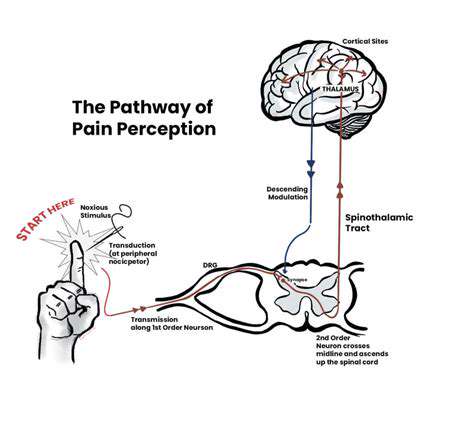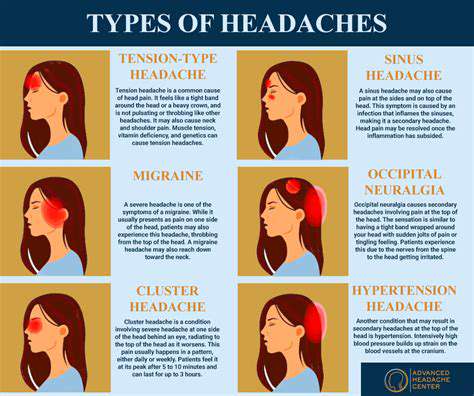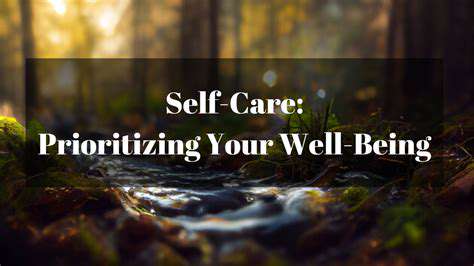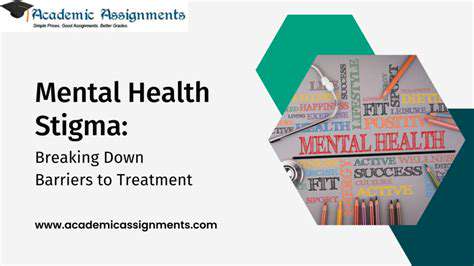Relaxation Response Techniques for Headache Prevention
Identifying Headache Triggers and Recognizing Patterns
Understanding the Role of Stress
Stress, a common culprit behind many headaches, can manifest in various ways, impacting both physical and mental well-being. Chronic stress, whether stemming from work pressures, relationship difficulties, or financial concerns, can create a physiological response that triggers tension-type headaches. Identifying specific stressors and developing coping mechanisms is crucial for managing headache frequency and intensity. Recognizing patterns in when headaches occur, like after a particularly demanding day at work or during periods of heightened anxiety, can offer valuable clues in pinpointing potential triggers.
Understanding the body's stress response is key to recognizing its impact on headache triggers. Our bodies release hormones like cortisol in response to stress, which can constrict or dilate blood vessels in the head, potentially leading to pain signals. Recognizing these patterns allows individuals to develop strategies to mitigate the stress response and, consequently, reduce the likelihood of headache episodes.
Dietary Factors and Their Impact
Certain foods and beverages can act as powerful headache triggers. For example, caffeine withdrawal can lead to headaches, while excessive caffeine intake can contribute to migraines. Foods high in tyramine, a substance found in aged cheeses, cured meats, and some fermented foods, can also be a significant trigger for some individuals. Identifying these dietary triggers through meticulous observation and documentation of food intake patterns is a crucial step in managing headaches.
Keeping a detailed food diary can reveal patterns in headache occurrences, connecting certain foods or drinks to headache episodes. This detailed record will allow for targeted dietary adjustments and the potential identification of hidden triggers that might otherwise go unnoticed.
Environmental Factors and Sensitivity
Environmental factors, such as changes in weather patterns, barometric pressure fluctuations, or exposure to strong odors, can influence headache frequency and intensity. Some individuals are highly sensitive to environmental changes, experiencing headaches more readily in response to these fluctuations. This sensitivity can manifest as migraines or tension-type headaches, highlighting the importance of recognizing environmental triggers.
Sleep Disruptions and Their Connection to Headaches
Sleep disturbances, such as inadequate sleep duration or poor sleep quality, can significantly contribute to headaches. When sleep is compromised, the body's natural restorative processes are disrupted, potentially leading to increased tension and pain in the head and neck. Recognizing the link between sleep and headache triggers allows individuals to prioritize sleep hygiene and create a conducive sleep environment for better overall well-being and reduced headache frequency.
Physical Activity and Its Role in Headache Patterns
While physical activity is generally beneficial for health, excessive or strenuous exercise can sometimes trigger headaches. Dehydration, resulting from intense physical exertion, can contribute to headaches. Similarly, changes in blood flow associated with intense workouts might also trigger pain in some individuals. Understanding this relationship enables individuals to tailor their exercise routines, preventing overexertion and potential headache episodes.
Emotional Factors and Their Influence on Headaches
Emotional factors, such as stress, anxiety, and depression, can significantly impact headache patterns. Emotional distress can trigger or exacerbate headaches, highlighting the importance of managing emotional well-being. Identifying emotional triggers and developing coping mechanisms, such as relaxation techniques or stress management strategies, is essential for reducing headache frequency and severity. This involves recognizing emotional states and employing strategies for emotional regulation to minimize their potential impact on headaches.
Mindfulness and Meditation for Headache Relief

Mindfulness Practices
Mindfulness practices, at their core, involve paying attention to the present moment without judgment. This encompasses a wide range of techniques, from focusing on your breath to observing your thoughts and sensations as they arise. Developing this awareness can have a profound impact on your mental well-being, reducing stress and promoting a sense of calm. Practicing mindfulness allows you to detach from the constant chatter of your mind, fostering a greater sense of peace and clarity. This awareness can help you navigate challenging situations with more resilience and acceptance.
A key element in mindfulness is non-judgmental observation. This doesn't mean ignoring difficult emotions, but rather recognizing them without getting carried away by them. By acknowledging your feelings without assigning them a positive or negative value, you can begin to understand them better and respond to them more effectively.
Meditation Techniques
Meditation, a cornerstone of mindfulness practice, involves training the mind to focus on a particular object or sensation. This might be your breath, a mantra, a visual image, or even a specific body part. Through consistent practice, meditation cultivates concentration and stillness, allowing you to quiet the mind's incessant chatter. This cultivated quietude can lead to a deeper understanding of yourself and the world around you.
Various meditation techniques exist, each with its unique approach. Guided meditations, for example, provide verbal instructions to help you focus your attention. Mindful walking meditations encourage you to pay attention to the physical sensations of movement and the environment around you. Exploring different techniques can help you discover what resonates most with you and facilitates your personal journey towards inner peace.
Benefits of Mindfulness and Meditation
The benefits of incorporating mindfulness and meditation into your daily routine are numerous and multifaceted. Studies have shown a correlation between regular practice and reduced symptoms of anxiety and depression. Improved emotional regulation and stress management are also frequently reported outcomes. Moreover, mindfulness can enhance self-awareness, allowing you to recognize patterns in your thoughts and behaviors.
Beyond the mental benefits, mindfulness and meditation can also positively impact your physical health. Lower blood pressure, improved sleep quality, and increased resilience to stress are some of the physical improvements often associated with these practices. By cultivating a greater sense of inner peace, mindfulness and meditation can empower you to navigate life's challenges with greater ease and grace.
Furthermore, mindfulness and meditation can help improve focus and concentration. The ability to quiet the mind and concentrate on the present moment translates to improved performance in various areas of life, from work and study to personal relationships. Cultivating these skills can lead to a more fulfilling and productive life overall.
Integration into Daily Life
Integrating mindfulness and meditation into your daily life doesn't require a complete overhaul of your schedule. Even a few minutes of dedicated practice each day can yield significant results. Start small by incorporating brief mindfulness exercises into your morning routine or finding quiet moments throughout your day for meditation. These brief moments of focused attention can significantly impact your overall well-being.
Experiment with different methods and find what works best for you. There are numerous apps, online resources, and communities dedicated to supporting your mindfulness journey. Don't be afraid to explore these resources and seek guidance from experienced practitioners. Consistency is key, and gradual integration will help you sustain your practice over time. Building a sustainable mindfulness and meditation practice is an ongoing process of self-discovery and growth.










